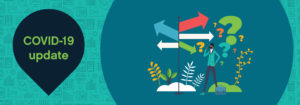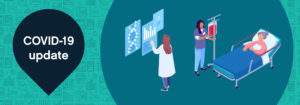Looking ahead to 2015, we spoke to our chief medical officer, Terry Fouts M.D. and one of our predictive analytics scientists, Virginia Long, to gather their insight on the healthcare industry for the New Year. They predicted major EHR improvements, an increase in wearable use and innovations in telemedicine. These trends reflect the transparency of healthcare providers, the increasingly health conscious population and the growing popularity of home care. Read more on their 2015 expectations below.
Major Efforts to Improve of EHRs
According to a recent study by the National Partnership for Woman & Families, in 2014 more than four in five patients with online access to their health records (86 percent) used their online records at least once – and more than half (55 percent) used them three or more times a year.
Despite the criticism of EHRs during the 2014 Ebola crisis, patient use increased significantly in 2014 and will continue to grow in 2015. The industry now needs to make the required efforts to increase EHR proficiency with the support of good analytics to empower providers with rich, actionable data. As a result, healthcare organizations will ramp up their efforts to ensure EHRs are improving, not hindering workflow and continuing EHR growth to meet patient and provider needs.
Wearables Will Drive our Healthy Lifestyles
Building out of the new wearable innovations from last week’s CES conference, wearables will continue to take precedence in personal health in 2015. In fact, according to CMO.com, worldwide spending on wearable technology will reach 1.4 billion by 2016. Wellness programs are taking note of this trend and are teaming up with activity trackers and wearables to address health struggles and to promote healthier lifestyles.
For example, last year MedeAnalytics began participating in a health and wellness program called Global Corporate Challenge (GCC). The goal of the program is to increase employee activity through a virtual walking tour around the world in 100 days. Teams within the company and around the world competed against one another. Each participant was given two activity trackers (pedometers) and were tasked to enter their daily steps on a website. Participation was nearly 65 percent demonstrating the interest in wearables and wellness programs.
Widespread Home Testing and Care for Patients, Especially with Chronic Conditions
75 percent of national health care spending goes towards the treatment of chronic diseases (two-thirds of Medicare beneficiaries have at least two chronic conditions and they account for 93 percent of Medicare spending).
With a growing provider shortage and the cost of care for patients with chronic conditions, home testing devices and telemedicine will become increasingly popular. Finger stick blood sugars for diabetics; pulse oximetry readings for those with chronic lung diseases; blood pressure readings and automated scales for congestive heart failure patients have nearly achieved virtually instantaneous communication between the patient device and provider. These technologies have helped saved lives and pushed the healthcare industry closer to automatic communication with improved care and lowed spending. The question is which chronic illnesses will be supported with home testing in 2015 and how will they help address the current provider shortage?
As we enter this New Year, these technologies will continue to evolve and advance the healthcare industry. MedeAnalytics looks forward to witnessing the progression of these trends in 2016.
Get our take on industry trends
Data visualization: A picture is worth a thousand…healthcare data points?
The amount of data produced daily has grown exponentially with nearly 90% of the world’s data generated in the last two years alone. To ensure we can make sense of this data, analysts must find meaningful ways to present the information to their audiences.
Read on...How did we get here? Hospital analytics and the new normal
I have heard the word “unprecedented” so many times in 2020 that it has lost its significance; many of us have become desensitized to the extraordinary changes in the world this year.
Read on...How to help employer groups plan in a time of uncertainty
Employers and their sponsored health plans are thinking about next year’s benefit designs with a significant challenge not seen before: the effect of the coronavirus pandemic. There are important considerations to take into account before making any decisions about new or existing coverage. Becky Niehus, a director of Product Consulting at MedeAnalytics, explores these new issues and what employers can do to ensure employees are “covered.”
Read on...Healthcare’s return to “normal” after COVID-19: Is it possible?
As providers determine how to get patients to return to facilities for routine disease management and preventive screenings, opportunities are ripe for the application of analytics to triage at the right time to the right setting. Data related to COVID-19 will continue to flow rapidly, but there are possibly more questions than answers now about a return to “normal.”
Read on...



